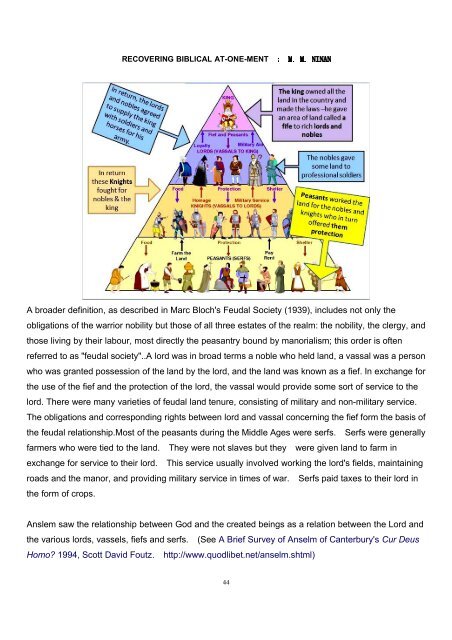Atonement
You also want an ePaper? Increase the reach of your titles
YUMPU automatically turns print PDFs into web optimized ePapers that Google loves.
RECOVERING BIBLICAL AT-ONE-MENT : M.<br />
M. M. NINAN<br />
A broader definition, as described in Marc Bloch's Feudal Society (1939), includes not only the<br />
obligations of the warrior nobility but those of all three estates of the realm: the nobility, the clergy, and<br />
those living by their labour, most directly the peasantry bound by manorialism; this order is often<br />
referred to as "feudal society"..A lord was in broad terms a noble who held land, a vassal was a person<br />
who was granted possession of the land by the lord, and the land was known as a fief. In exchange for<br />
the use of the fief and the protection of the lord, the vassal would provide some sort of service to the<br />
lord. There were many varieties of feudal land tenure, consisting of military and non-military service.<br />
The obligations and corresponding rights between lord and vassal concerning the fief form the basis of<br />
the feudal relationship.Most of the peasants during the Middle Ages were serfs. Serfs were generally<br />
farmers who were tied to the land. They were not slaves but they were given land to farm in<br />
exchange for service to their lord. This service usually involved working the lord's fields, maintaining<br />
roads and the manor, and providing military service in times of war. Serfs paid taxes to their lord in<br />
the form of crops.<br />
Anslem saw the relationship between God and the created beings as a relation between the Lord and<br />
the various lords, vassels, fiefs and serfs. (See A Brief Survey of Anselm of Canterbury's Cur Deus<br />
Homo? 1994, Scott David Foutz. http://www.quodlibet.net/anselm.shtml)<br />
44


















